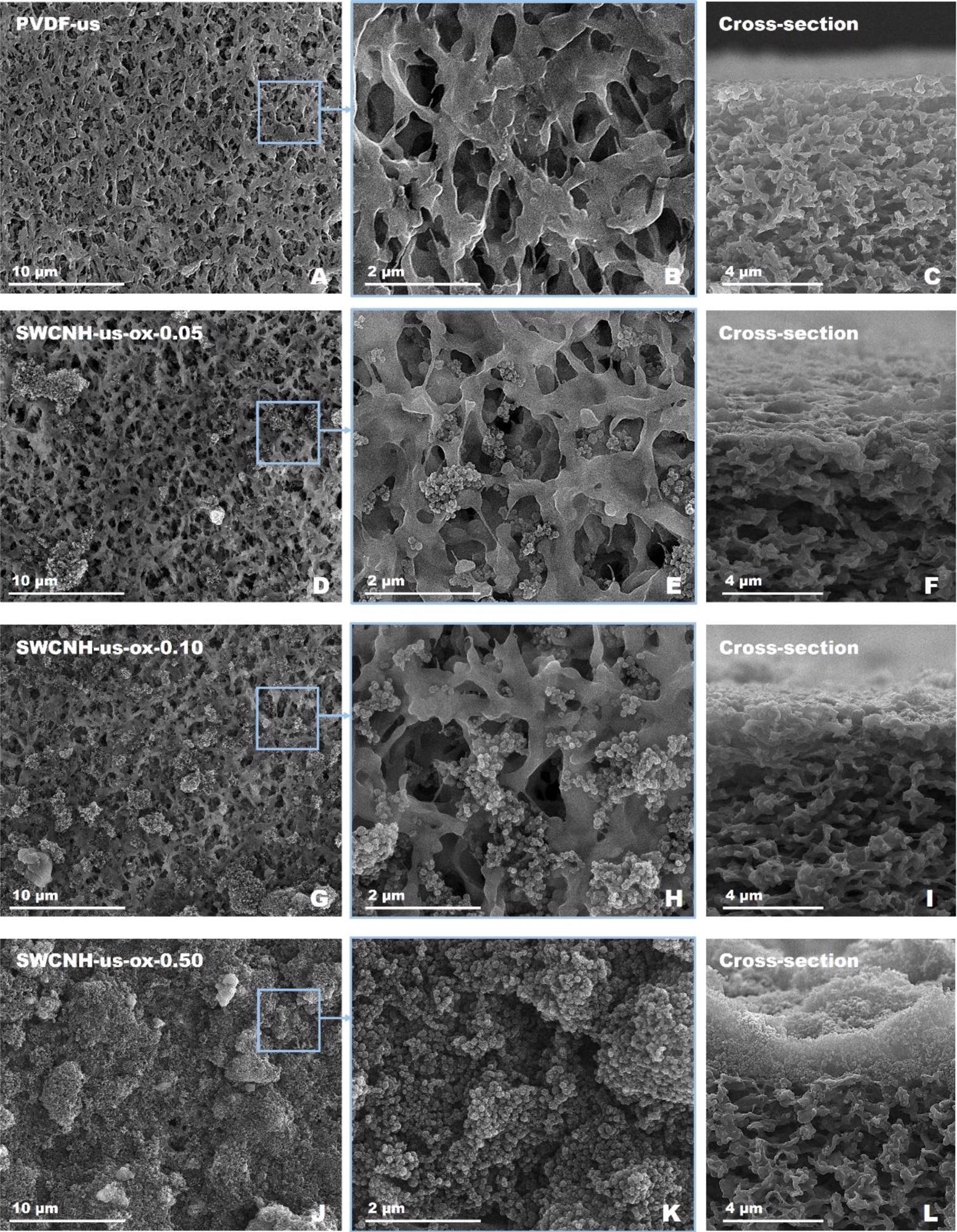A team of researchers recently published a paper in the Chemical Engineering Journal that demonstrated the effectiveness of polyvinylidene fluoride (PVDF)-modified carbon nanohorn hybrid membranes in removing volatile organic compounds (VOCs) from water.

Study: Hedgehog-like structure, PVDF- carbon nanohorn hybrid membranes for improved removal of VOCs from water. Image Credit: VectorMine/Shutterstock.com
The Impact of VOCs
The development of effective methods to eliminate VOCs from wastewater is rapidly becoming a crucial aspect for protecting the environment as well as human health. Membrane-based separation techniques have shown great potential in removing VOCs from water. Thus, it is necessary to develop separation materials with enhanced transport and separation properties.
VOCs such as methyl acetate and ethanol emitted from different industries are flammable, dangerous, and toxic substances, and their removal from water is essential in preventing environmental damage.
Although ethanol separation from water is often studied and performed through membrane separation techniques using different groups of the membrane, methyl acetate separation from water has not been studied extensively using such techniques.
Currently, elaborate and complicated modifications are performed to enhance the properties of membranes.
Membranes are often tuned to adjust their hydrophobicity and engender omniphobic properties. Although tuning can optimize the overall membrane performance, adapting materials that can maintain high permeate flux and separation is extremely challenging.
Membrane surfaces with pore walls and moderate hydrophilicity can potentially improve water permeability in membranes. However, hydrophilic membranes are not suitable in certain processes such as membrane distillation.
A critical balance has to be maintained between the two properties while performing modifications in the membrane features.
A range of biomimetic inspirations can be sourced from nature, which can be adapted to membrane science using material engineering tools to potentially produce highly-efficient membranes, including materials for eliminating VOCs from water. For instance, PVDF-based biomimetic membranes containing chitosan have demonstrated improved separation and transport and a higher permeate flux.
Single-walled carbon nanohorns (SWCNH) are new materials that possess several beneficial features and can be tuned precisely to modify their physical features.
In this study, researchers synthesized a new type of PVDF-SWCNH hybrid separation membrane and investigated their effectiveness in removing VOCs, specifically methyl acetate and ethanol, from water.

Figure 1. HR-SEM – the structure of pristine SWCNH (A); treated with ultrasounds (SWCNH-us) (B), oxidated SWCNH (SWCNH-ox) (C), and treated with both ultrasounds and oxidized (SWCNH-us-ox) (D). © Kujawa, J., Zięba, M., Kujawski, W. et al. (2022)
The Study
The PVDF membrane was coated with pretreated and pristine SWCNH that were modified by ultrasonication, oxidation, or both processes, and extensively investigated. PVDF commercial membranes with 0.22 μm pore size, SWCNH, methyl acetate, ethanol, and 15 MΩ·cm deionized (DI) water were used as the starting materials for the study.
The spray-coating technique was used to cover the samples of hydrophobic PVDF membranes with SWCNHs using isopropanol-based suspensions of oxidized or pristine SWCNHs.
Concentrated nitric acid was used to oxidize SWCNHs for 1.5 h. All suspensions were sonicated for 45 s before they were spray-coated on the PVDF membrane. Spray coating was performed by airbrush under 2.5 bar air pressure.
Three distinct coverages of 0.5 mg cm-2, 0.1 mg cm-2, and 0.05 mg cm-2 were obtained for membranes spray-coated with oxidized SWCNHs, spray-coated with pristine SWCNHs and sonicated on ultrasonic bath, and spray-coated with pristine SWCNHs, respectively. The coverage value remained the same at 0.5 mg cm-2 for membranes spray-coated with oxidized SWCNHs and then sonicated on an ultrasonic bath.
The membrane morphology was visualized using a high-resolution scanning electron microscope (HR-SEM) with Quanta 3D FEG DualBeamTM and a Quantax 200 with XFlash 4010 detector.
The carbon additives were characterized using a high-resolution transmission electron microscopy (HR-TEM). Nano Plus HD zeta/particle analyzer and SurPass3 Analyzer were employed to analyze the surface charge.
Air-gap membrane distillation (AGMD) was performed using the hybrid membranes to remove the selected hazardous VOCs from water.

Figure 2. HR-SEM images surface and cross-sections of the generated hybrid materials. Pristine membrane (A - C); and materials with SWCNH oxidized and ultrasonicated with level of coverage of 0.05 (D - F), 0.10 (G - I), and 0.50 (J - L) cm m-2. © Kujawa, J., Zięba, M., Kujawski, W. et al. (2022)
Observations
The hybrid separation materials with desert-rose- and hedgehog-like surface architectures were successfully synthesized. The membranes were composed of an SWCNH outer layer and hydrophobic PVDF support.
Modifying SWCNH before the synthesis of hybrid materials significantly influenced the physicochemical and material properties, such as morphology, surface charge, and critical surface tension, of the hybrid membranes.
As a result, the separation and transport properties of the synthesized hybrid materials can be adjusted in an effortless manner.
Hybrid materials with an extensive range of phobicity, ranging from highly hydrophobic to hydrophilic, were obtained due to the use of pretreated SWCNH, indicating the significance of the SWCNH layer to develop a membrane with robust hydrophilic/superhydrophobic properties.
![Comparison of the investigated membranes performance in the separation (at 2.0 wt.% of VOC in feed). PSI unit is following [kg m-2 h-1].](https://www.azonano.com/images/news/ImageForNews_38785_1646651145209223.jpg)
Figure 3. Comparison of the investigated membranes performance in the separation (at 2.0 wt.% of VOC in feed). PSI unit is following [kg m-2 h-1]. © Kujawa, J., Zięba, M., Kujawski, W. et al. (2022)
Membranes coated with pristine SWCNH demonstrated significantly less wettability and inferior transport and separation properties compared to membranes coated with oxidized and sonicated SWCNH. Additionally, the membrane performance improved when modified with oxidized or ultrasonicated SWCNH due to the substantial increase in permeate flux and process separation index.
The synthesized membranes were found effective for membrane distillation for the first time owing to the use of a unique construction technique. All membranes were selective to the VOCs evaluated in the study.
To summarize, the findings of this study demonstrated that PVDF-modified SWCNH hybrid membrane can be used to effectively eliminate methyl acetate and ethanol from water.
Reference
Kujawa, J., Zięba, M., Kujawski, W. et al. (2022) Hedgehog-like structure, PVDF- carbon nanohorn hybrid membranes for improved removal of VOCs from water. Chemical Engineering Journal https://www.sciencedirect.com/science/article/pii/S1385894722010762
Disclaimer: The views expressed here are those of the author expressed in their private capacity and do not necessarily represent the views of AZoM.com Limited T/A AZoNetwork the owner and operator of this website. This disclaimer forms part of the Terms and conditions of use of this website.